
Bloomsbury is a registered trademark of Bloomsbury Publishing Plc This electronic edition published in 2016 by Bloomsbury Publishing Plc First published in Great Britain in 2012 by Absolute Press, an imprint of Bloomsbury Publishing Plc
Absolute Press Scarborough House 29 James Street West Bath BA1 2BT
Phone 44 (0) 1225 316013
E-mailWebsite www.absolutepress.co.uk Text copyright Vivek Singh, 2012 This edition copyright Absolute Press Photography copyright Lara Holmes
Publisher Jon Croft
Commissioning Editor Meg Avent
Art Direction Matt Inwood
Design Matt Inwood
Editor Lucy Bridgers
Assistant Editor Beverly LeBlanc
Indexer Zoe Ross
Photography Lara Holmes
Food Styling Vivek Singh and Abdul Yaseen
Props Styling Matt Inwood and Lara Holmes ISBN: 978-1-9066-5080-3
ePub: 978-1-4729-3493-2 The rights of Vivek Singh to be identified as the author of this work have been asserted by him in accordance with the Copyright Designs and Patents Act 1988. All rights reserved
You may not copy, distribute, transmit, reproduce or otherwise make available this publication (or any part of it) in any form, or by any means (including without limitation electronic, digital, optical, mechanical, photocopying, printing, recording or otherwise), without the prior written permission of the publisher. Any person who does any unauthorised act in relation to this publication may be liable to criminal prosecution and civil claims for damages. A catalogue record of this book is available from the British Library.
Bloomsbury Publishing Plc 50 Bedford Square London WC1B 3DP www.bloomsbury.com INTRODUCTION THE CLUB GOES CASUAL The historic Western Courtyard in Devonshire Square where Cinnamon Kitchen and Anise is housed today was first acquired by the East India Company back in 1820 and at the time was used to store spices, forming part of a gigantic warehouse complex covering over five acres. I was first shown around the area in 2007 and I just couldnt imagine a better setting for The Cinnamon Clubs new and more casual manifestation than a spice warehouse that once stored Indias then premier export and that would shortly house Indias best known export of modern times the Indian restaurant! But the real reason behind the creation of Cinnamon Kitchen and Anise was much more than the chance to offer a dining space in an old spice warehouse once owned by the East India Company.
The idea of Cinnamon Kitchen had begun to take root some years before ironically, at the time when The Cinnamon Club was already creating waves with its fine dining menu and upmarket approach towards Indian food. The Cinnamon Club serves no fewer than 100,000 guests per year and yet I am still asked if it is an exclusive, members-only destination! Unashamedly luxurious and high-end it might be, but I always intended it to be a welcoming place, open to all, serving extraordinary Indian food in an extraordinary setting. Although The Cinnamon Club is internationally renowned, I did not want my cuisine to become the preserve exclusively of the famous and fortunate. I had begun to realise that it is entirely possible to be as creative and innovative as we are at The Cinnamon Club while managing to appeal to a wider, more diverse clientele. Indeed, food of this calibre certainly doesnt need to be restricted to the confines of an exclusive restaurant. With this in mind, Cinnamon Kitchen was born, billed as The Cinnamon Clubs younger, cooler sister restaurant in the City and housed rather appropriately inside the historic East India Company spice warehouse.
Our menu uses the same local, seasonal ingredients and creative, bold cooking techniques as those that feature at The Cinnamon Club but in a far more relaxed, flexible format. Diners at The Cinnamon Club can enjoy anything up to nine courses and beyond, whereas Cinnamon Kitchen is more about the option of dropping by for a light lunch or a couple of smaller, quicker plates for dinner. We decided on adding a glamorous bar space, which we called Anise, adding to the casual feel by serving pre- or post-work drinks and a few small spicy nibbles. And I insisted on access to a gorgeous tandoor grill, where I now host my cooking masterclasses throughout the year. At Anise we showcase trademark Cinnamon innovation and creativity, only in this case with drinks! Our cocktails reinterpret classic Western cocktails with homemade spice infusions and exotic tropical juices. Sometimes the drinks also draw inspiration from traditional Indian favourites such as lassis and thandhai, combining them with spirits to create drinks that are very new, very now.
And once again this makes a nod to the old East Indian spice warehouse where we find ourselves today. Put simply, my intention for Cinnamon Kitchen has always been to create a space where great food is served in a casual and friendly atmosphere, free of formality and dress codes a place where the expectations of the Cinnamon dining experience are fully met in a relaxed, informal setting. 


 FOOD FOR THOUGHT
FOOD FOR THOUGHT  When I was developing the menu for The Cinnamon Club, there was great emphasis on exclusive, expensive ingredients. I wanted high-end cooking in a high-end environment; my younger self thought the more expensive the dishes, the more expensive the experience and the more seriously people took it. But from the outset I envisaged Cinnamon Kitchen to be quite different. I wanted the menu to be appealing, fresh, and creative offering the same quality experience diners had come to expect from The Cinnamon Club but not necessarily the most expensive.
When I was developing the menu for The Cinnamon Club, there was great emphasis on exclusive, expensive ingredients. I wanted high-end cooking in a high-end environment; my younger self thought the more expensive the dishes, the more expensive the experience and the more seriously people took it. But from the outset I envisaged Cinnamon Kitchen to be quite different. I wanted the menu to be appealing, fresh, and creative offering the same quality experience diners had come to expect from The Cinnamon Club but not necessarily the most expensive.
As a young chef, I subscribed to the view that the more resources you had, the more creativity you had, but as my thinking evolved and my experience developed I began to believe that creativity is not linked to the depth of your pockets. Some of my best creations recently have come from the simplest, most cost-effective ingredients. Cinnamon Kitchen gives me the opportunity to be more creative with lesser-known cuts of meat it pushes my team to think outside the box and to run free with ideas. Good examples are our much-loved vindaloo of ox cheek and our rump of lamb both of which have become Cinnamon Kitchen signature dishes, making use of cuts that would never feature on the Cinnamon Club menu. In terms of simplicity, not everything comes with an accompaniment for example, many dishes come with simple salads, while some are served straight up. This lighter, streamlined approach also means that we can have more of a focus on the main components of the dish and let them be the star on the plate.
I also decided to feature an open tandoor grill at the Cinnamon Kitchen helping to simplify the menu, taking it away from a traditional, structured three-course format to one offering a mix of small plates, grills, larger dishes and desserts and bringing with it a great sense of theatricality. This simple pared-down attitude to the menu has resulted in the creation of some of Cinnamon Kitchens strongest and best-loved plates, such as the bhaditrakha a simple grilled dish of lamb escalope that dates back to A.D.1127. Traditionally, the escalope is cut very thinly, spiced and cooked on a grill; Cinnamon Kitchen enables us to do just that and present it in its purest form, the way it was intended. THE MEN BEHIND THE MENU 

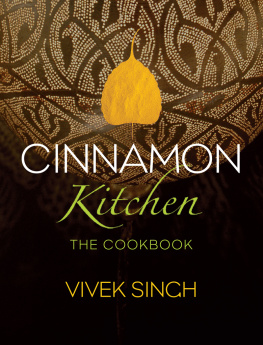



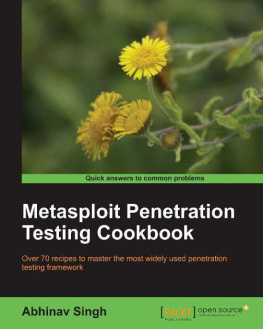


![Anita Jaisinghani - Masala: Recipes from India, the Land of Spices [A Cookbook]](/uploads/posts/book/320725/thumbs/anita-jaisinghani-masala-recipes-from-india-the.jpg)
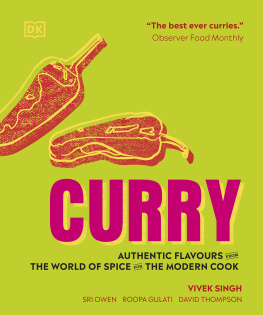
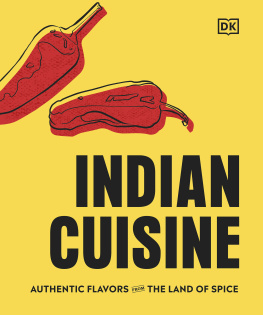
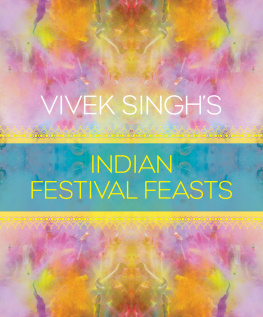
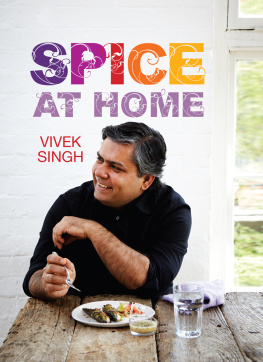
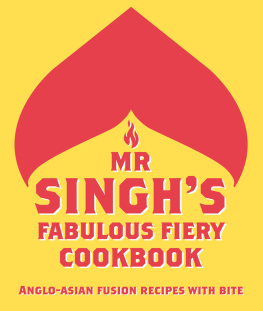

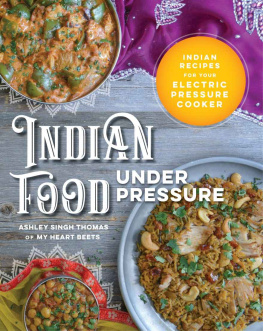
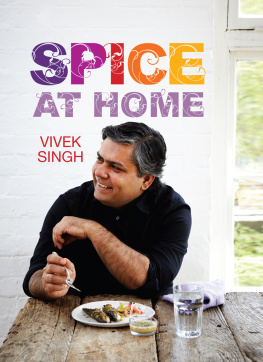
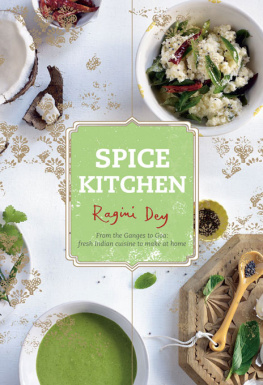
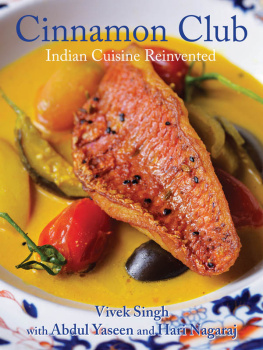

 Bloomsbury is a registered trademark of Bloomsbury Publishing Plc This electronic edition published in 2016 by Bloomsbury Publishing Plc First published in Great Britain in 2012 by Absolute Press, an imprint of Bloomsbury Publishing Plc Absolute Press Scarborough House 29 James Street West Bath BA1 2BT Phone 44 (0) 1225 316013 E-mailWebsite www.absolutepress.co.uk Text copyright Vivek Singh, 2012 This edition copyright Absolute Press Photography copyright Lara Holmes Publisher Jon Croft Commissioning Editor Meg Avent Art Direction Matt Inwood Design Matt Inwood Editor Lucy Bridgers Assistant Editor Beverly LeBlanc Indexer Zoe Ross Photography Lara Holmes Food Styling Vivek Singh and Abdul Yaseen Props Styling Matt Inwood and Lara Holmes ISBN: 978-1-9066-5080-3
Bloomsbury is a registered trademark of Bloomsbury Publishing Plc This electronic edition published in 2016 by Bloomsbury Publishing Plc First published in Great Britain in 2012 by Absolute Press, an imprint of Bloomsbury Publishing Plc Absolute Press Scarborough House 29 James Street West Bath BA1 2BT Phone 44 (0) 1225 316013 E-mailWebsite www.absolutepress.co.uk Text copyright Vivek Singh, 2012 This edition copyright Absolute Press Photography copyright Lara Holmes Publisher Jon Croft Commissioning Editor Meg Avent Art Direction Matt Inwood Design Matt Inwood Editor Lucy Bridgers Assistant Editor Beverly LeBlanc Indexer Zoe Ross Photography Lara Holmes Food Styling Vivek Singh and Abdul Yaseen Props Styling Matt Inwood and Lara Holmes ISBN: 978-1-9066-5080-3


 FOOD FOR THOUGHT
FOOD FOR THOUGHT  When I was developing the menu for The Cinnamon Club, there was great emphasis on exclusive, expensive ingredients. I wanted high-end cooking in a high-end environment; my younger self thought the more expensive the dishes, the more expensive the experience and the more seriously people took it. But from the outset I envisaged Cinnamon Kitchen to be quite different. I wanted the menu to be appealing, fresh, and creative offering the same quality experience diners had come to expect from The Cinnamon Club but not necessarily the most expensive.
When I was developing the menu for The Cinnamon Club, there was great emphasis on exclusive, expensive ingredients. I wanted high-end cooking in a high-end environment; my younger self thought the more expensive the dishes, the more expensive the experience and the more seriously people took it. But from the outset I envisaged Cinnamon Kitchen to be quite different. I wanted the menu to be appealing, fresh, and creative offering the same quality experience diners had come to expect from The Cinnamon Club but not necessarily the most expensive.